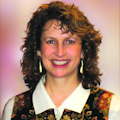BIOMEDICAL OPTICS AND PHOTONICS: BiOS tips the symposia scales at Photonics West
BiOS, the SPIE’s biomedical optics symposium that began prior to and ran concurrently with the industry’s annual mega show, Photonics West (San Jose, CA, January 24-27), opened with an exhibition featuring 165 companies and a record number of technical papers. More than 1600 papers, in fact, meaning that symposium is nearing half the size of Photonics West overall, which also includes the LASE, OPTO, and MOEMS/MEMS symposia.
The popular BiOS Hot Topics session kept hundreds of attendees riveted for two hours on Saturday night. Among the eight presenters was Stefan Hell from the Max-Planck-Institut fur Biophysikalische Chemi, who demonstrated how his stimulated emission depletion (STED) microscope achieves 28 times greater resolution than confocal, down to 8 nm, and records at 28 frames per second. Kishan Dholakia from the University of St. Andrews discussed studies in poration using lasers (also known as optical injection or transfection) to insert DNA and other molecules into cells. He said the technique is “set to become a mainstay in microscopy,” thanks especially to “novel light beams and optical technology and control.”
The third speaker, Chris Contag, a professor at Stanford University, discussed the importance of optical imaging in work to study cancer stem cells’ responses to therapy and relapse. And then Charles Lin of the Wellman Center for Photomedicine at Massachusetts General Hospital and Harvard Medical School took the audience on a tour of tracking stem cells in vivo. Summer Gibbs-Strauss discussed clinical trials of the fluorescence-assisted resection and exploration (FLARE) system developed to highlight cancerous tissue during surgery (see www.bioopticsworld.com/articles/337427). She said a handheld version, miniFLARE, is in the works as well.
Jennifer Barton from the University of Arizona told the audience, “the real magic is in the endoscope design,” during her exploration of combined techniques–optical coherence tomography (OCT) and fluorescence spectroscopy–for cancer detection. University of Pennsylvania professor Arjun Yodh presented diffuse optical monitoring of blood flow in the brain for acute stroke management. And most of the crowd held out until the end to hear Fiorenzo Omenetto of Tufts University describe his team’s work to create biodegradable silk optics (see www.bioopticsworld.com/articles/345201).
Hot topics beyond Hot Topics
The rest of the BiOS symposium was organized into five tracks: Photonic Therapeutics and Diagnostics; Clinical Technologies and Systems; Tissue Optics, Laser-Tissue Interaction, and Tissue Engineering; Biomedical Spectroscopy, Microscopy, and Imaging; and Nano/Biophotonics.
The conference drawing the largest crowd (besides the plenary sessions, that is) was Optical Coherence Tomography (OCT) and Coherence Domain Optical Methods in Biomedicine, which ran all day Monday through Wednesday. Among the topics covered were ophthalmic, Doppler, and endoscopic OCT; and new clinical applications, techniques, and light sources. OCT presentations also appeared elsewhere in the program.
According to the SPIE, other BiOS conferences attracting large numbers of attendees were Ophthalmic Technologies, Optical Tomography and Spectroscopy of Tissues, Optical Interactions with Tissue and Cells, Single Molecule Spectroscopy and Imaging, and Multiphoton Microscopy in the Biomedical Sciences. The SPIE notes that the Photons plus Ultrasound conference is the most rapidly growing area of research in the field of pre-clinical and clinical imaging.
The event also featured a National Institutes of Health workshop on brain imaging, and a meeting of the International Biomedical Optics Society (IBOS).
Interesting technology in the exhibit hall included the Fraunhofer Institute’s scanning photon microscope, new ultrafast lasers for multiphoton imaging from both Newport and Coherent, and some prototype OCT systems: two by ThorLabs and a handheld probe for skin imaging by Michelson Diagnostics.
About the Author

Barbara Gefvert
Editor-in-Chief, BioOptics World (2008-2020)
Barbara G. Gefvert has been a science and technology editor and writer since 1987, and served as editor in chief on multiple publications, including Sensors magazine for nearly a decade.
